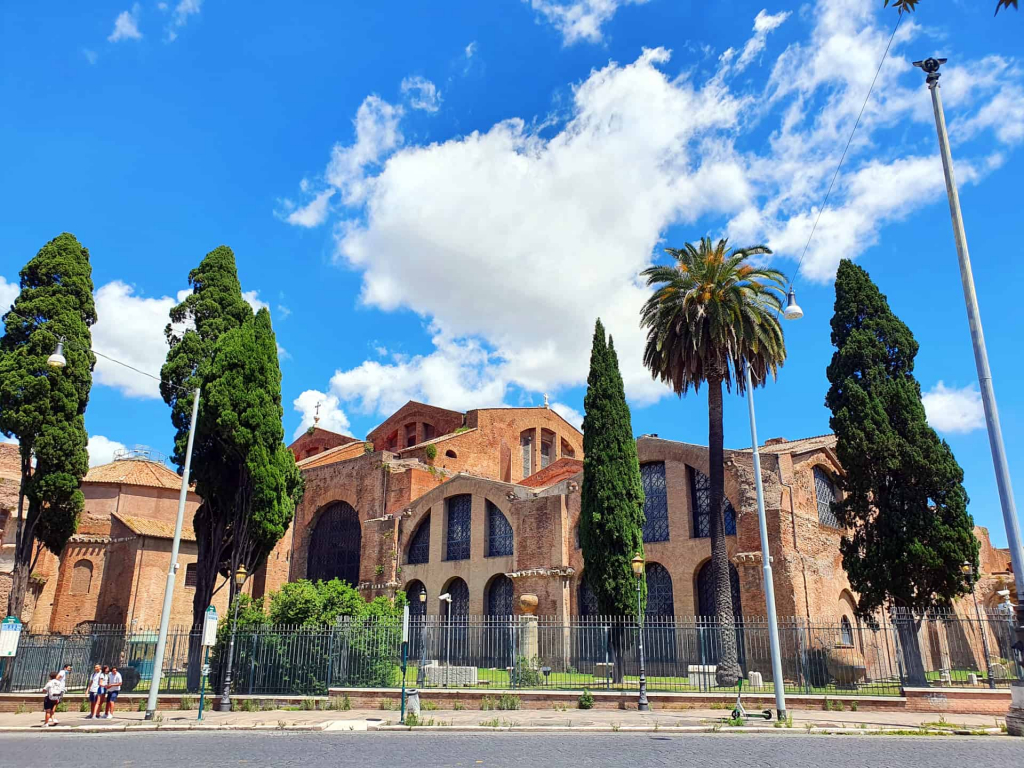
Saint Cecilia
Cecilia was born around 200 A.D. in Rome and died around 230 A.D. at the same place. She owes her byname ‚of Rome‘ to her birthplace and is one of the most famous Roman martyrs.
Her story was recorded in the Actae that was set down around the 5th century. Her name was shared by all women of the Roman people known as the Caecilians. The name may be related to the root of caecus (blind).
She already felt a deep belief in the Lord while she was a little girl. Because of that, she vowed eternal virginity. Her parents engaged her to a pagan man called Valerianus. During the wedding ceremony, Cecilia was praying to the Lord that he may let her body and soul stay taintless. While the music was playing she promised to serve Christ for eternity.

Chappel of Saint Cecilia in San Luigi dei Francesi (Rome)


Guido Reni’s copy of Raphaels “The ecstasy of Saint Cecilia” in San Luigi dei Francesi (Rome)
She told her husband that he may not touch her in a sexual way because she was under the protection of a mighty angel. He wanted to see the angel otherwise he would strike her to death. So she told him that he has to be baptized to catch a vision of the cherub.
Valerianus reaches out to pope Urban. While he is being babtized, a holy aged man appears to him holding a golden book. The baptized man returned home to Cecilia recognizing the angel with her. The sacred creature hands over wreaths of fragrant lilies and roses.
The newlyweds converted Tiburtius, the brother of Valerianus, during a visit on his part. The brothers put their energy in the service of Christ until they get caught themselves. During their confinement, they were guarded by a soldier called Maximus who gets proselytized, too. The three men were beheaded by prefect Almachius. Cecilia buried them.

Almachius tracked and threatened her. After that, she convinced her servants to convert to Christianity. They were baptized by Pope Urban together with 400 others. This got her into deeper trouble.
The prefect tried to kill her by making her take a bath in boiling water. After it fails he wants her to be beheaded. She got wounded badly by the hangman but it was impossible to kill her. The injured woman survived three more days and willed all of her riches to the poor. Urban buried her around 225 A.D. in the St. Callixtus Catacombs in Rome next to the bishops.
Her house got sanctified and turned into a church. In 822 her coffin was transferred to the Basilica Santa Cecilia in Trastevere. The legend tells that when the coffin was opened in 1599, her body was not decayed at all.
She still is worshipped today and is primarily known for being the patron of music. Her festive day is the 22nd of November that is the anniversary of the sanctification of the Basilica Santa Cecilia in Trastevere built above her former house.

The assumption of Saint Cecilia in San Luigi dei Francesi (Rome)

Treasures of Rome – Rome Guided Tours
Roberto Alois Lautenschlager Kung
[email protected]
Partita IVA: 17002181000
“ROMA AETERNA EST”
Rome is eternal – (Albius Tibullus)






